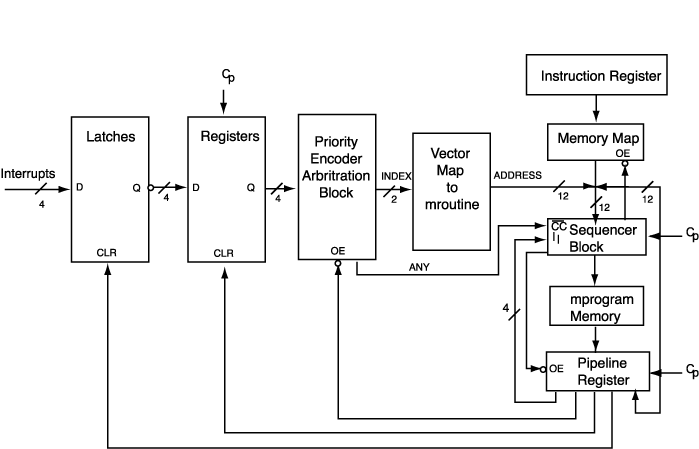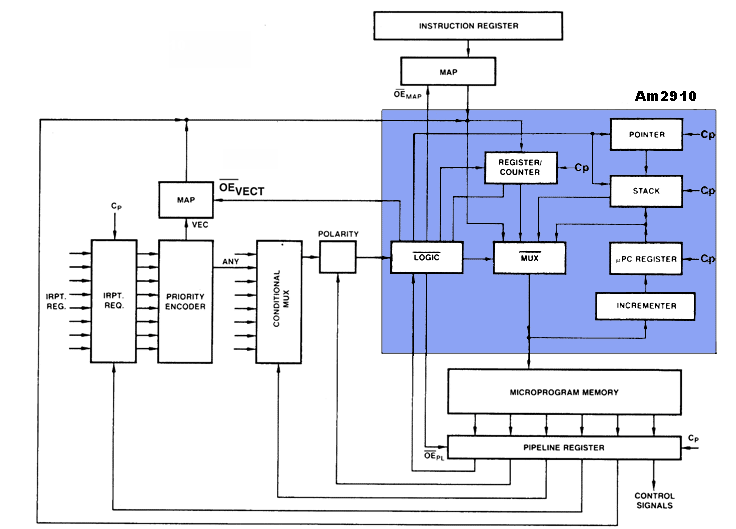Bit-Slice Design: Controllers and ALUs
by Donnamaie E. White
Copyright © 1996, 2001, 2002 Donnamaie E. White
- Pre-Introduction
- Selection of the Implementation
- Microprogramming
- Advantages of LSI
- The 2900 Family
- Language Interrelationships
- Controller Design
- Constructing the CCU
- Sequential Execution
- Multiple Sequences
- Start Addresses
- Mapping PROM
- Unconditional Branch
- Conditional Branch
- Timing Considerations
- Pipelining
- Improved Architecture
3. Adding Programming
Support to the Controller
- Expanded Testing
- Subroutines
- Nested Subroutines
- Stack Size
- Loops
- Am29811
- Am2909/11
- CASE Statement (Am29803A)
- Microprogram Memory
- Status Polling
- Interrupt Servicing
- Implementation - Interrupt Request Signals
- Vector Mapping PROM
- Next Address Control
- Am2910
- Am2910 Instructions
- Control Lines
- Interrupt Handling
- Am2914
- Interconnection of the Am2914
6. The ALU and Basic Arithmetic
- Further Enhancements
- Instruction Fields
- Instruction Set Extensions
- Sample Operations
- Arithmetic -- General
- Multiplication with the Am2901
- Am2903 Multiply
Refining the CCULast Edit November 2, 1996; May 1, 1999 Interrupt Servicing - ContinuedVector Mapping PROMRather than using the main microprogram memory to store a branch table, which requires a full microword to store what is essentially a branch address, it is better to use a vector mapping PROM. A vector mapping PROM is similar to the mapping PROM that was used earlier for the start address of the normal microroutines, with the vector mapping PROM providing the start addresses of interrupt service microroutines. The index bits from the priority encoder are the address bits supplied to the vector mapping PROM, and the PROM output is a full n-bit address. By using a PROM with tri-state output as the vector map, the map can share the microprogram address input with the mapping PROM and the branch address. The next-address control block must supply an OE'vector control line in this case. (See Figure 4-6.) Figure 4-6 Using a vector map |

